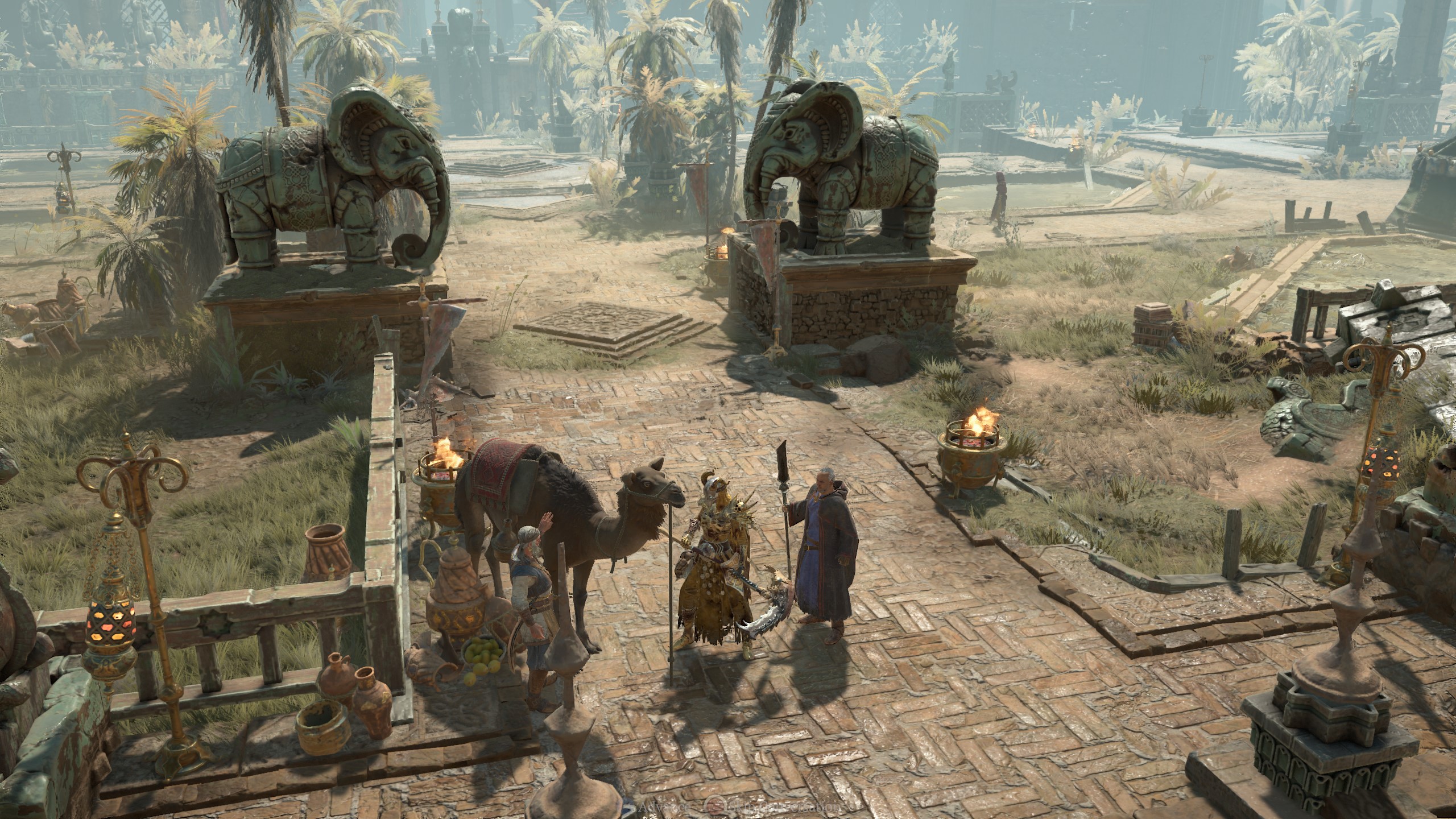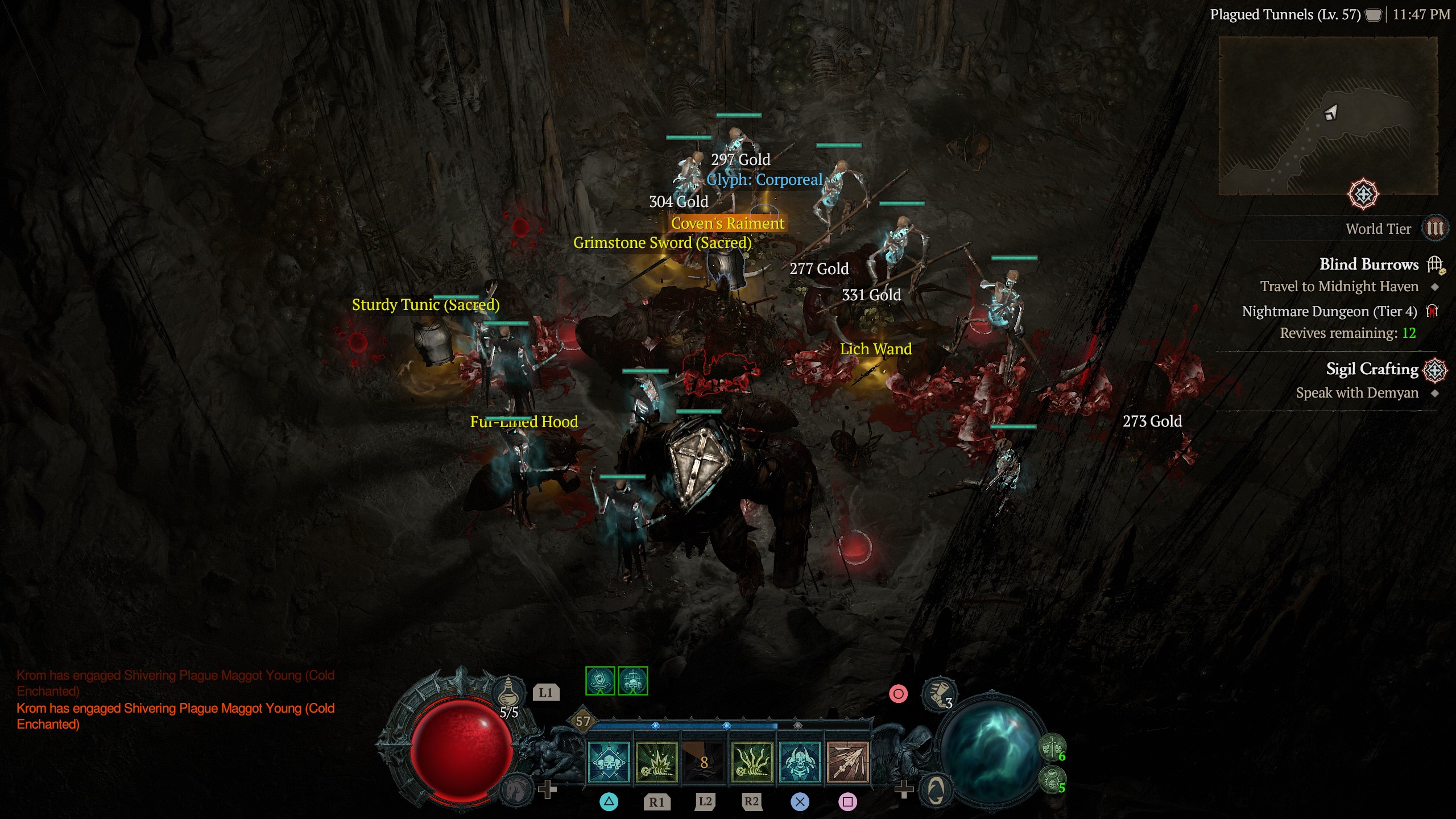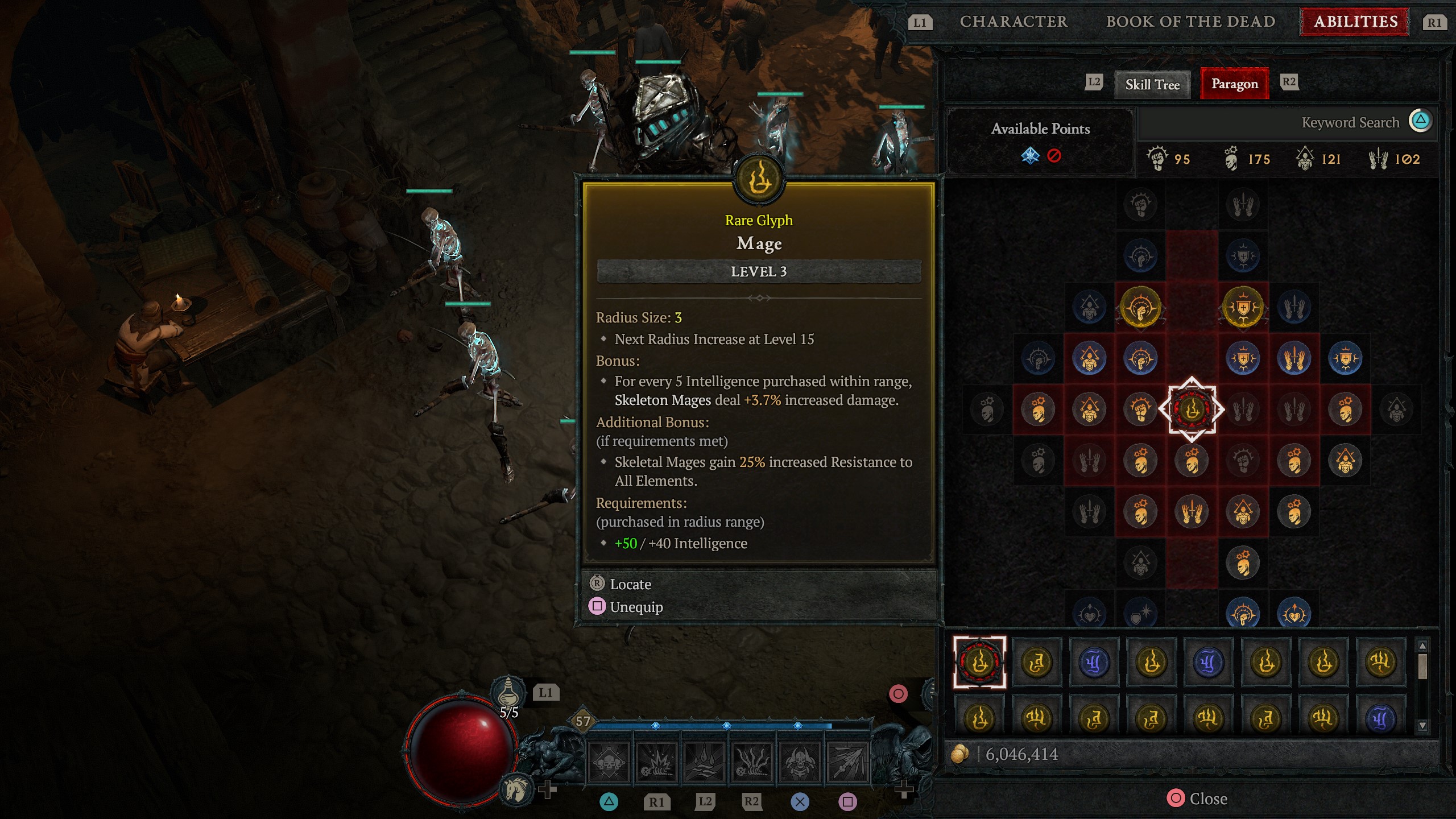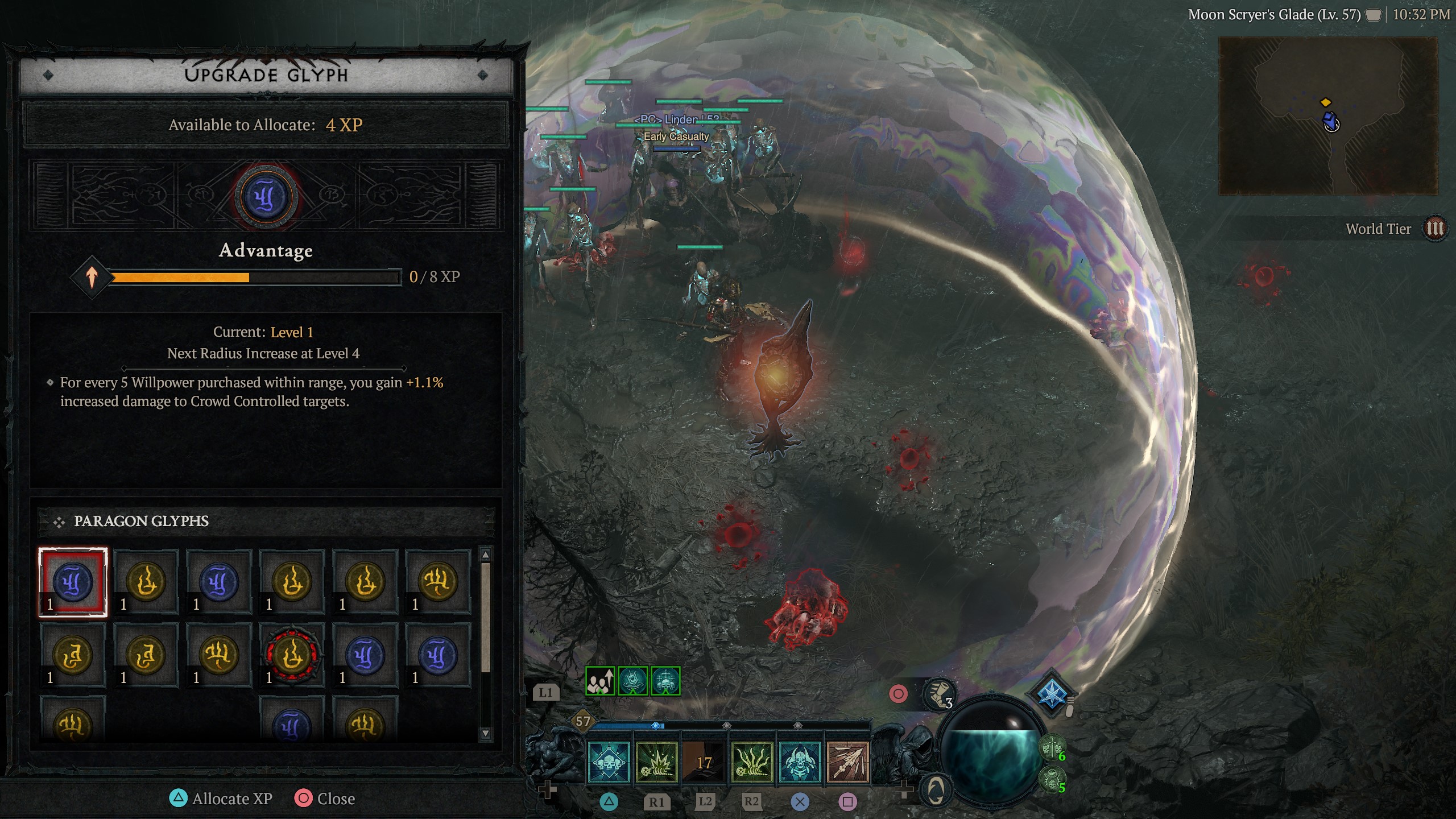Diablo 4 Glyphs and how to use them
These special endgame items slot into your Paragon board.


Diablo 4 guide: Everything you need
Diablo 4 Legendary Aspects: New powers
Diablo 4 Altars of Lilith: Stat boosts and XP
Diablo 4 Murmuring Obols: Get Legendary gear
The Diablo 4 Glyph mechanic is one of the game's more confusing, but it's important in terms of strengthening yourself in either Nightmare or Torment world tier, plus getting the most out of your Paragon board when you hit level 50. This is because each Glyph provide powerful bonus based on where you place it and what nodes you unlock in its radius.
If you're new to Diablo 4's endgame, then you might be curious about those newly unlocked Sacred and Unique items, that whole Helltide event, or where to find a world boss to take down. Otherwise, here's how to get Diablo 4 Glyphs, plus how to use and upgrade them for your Paragon board.
How to get Glyphs

The best way to get Glyphs is by doing Nightmare Dungeons, since they often drop from elites, chests, and the final boss. You need to be world tier three in order to access Nightmare Dungeons, which means completing the campaign and beating the capstone dungeon in Kyovashad. Once complete, you can change your world tier at the statue in Kyovashad's main square.
You'll also need to find a Nightmare Sigil. Your best chance for getting one of these is completing Whispers of the Dead for the Tree of Whispers to earn a loot cache, since these have a chance of dropping Nightmare Sigils. When you've got one, simply use the sigil in your consumables to activate the dungeon.
You don't really need to worry about getting more since Nightmare Dungeons drop other Nightmare Sigils, and getting one will unlock sigil crafting in Kyovashad anyway.
How to use Glyphs

Once you have a Glyph, you need to slot it into your Paragon board. You'll have to build a path to your first Glyph socket via unlocking nodes as you get Paragon points from levelling, and finally unlock the socket itself before you can place one in it.
Each Glyph has both a Radius and a Bonus or set of bonuses it applies based on its rarity. For example, my rare Necromancer "Mage" Glyph has a radius of three on either side, and for every +5 intelligence node I unlock in that area, my skeletal mages get a +3.7% damage bonus. Since it's a rare Glyph, it also has an additional fixed bonus when I have 40 intelligence unlocked in the radius.
The biggest gaming news, reviews and hardware deals
Keep up to date with the most important stories and the best deals, as picked by the PC Gamer team.
As you play and level, you'll unlock more class-specialised Glyphs and more Glyph sockets through your added Paragon boards, but generally, the key is placing a Glyph where its bonus can stack the highest based on the nodes available in its radius. In my case, there were more intelligence nodes in the Glyph socket's radius than dexterity, strength, or willpower, so it made sense to use a Glyph there that stacked an intelligence-based bonus.
How to upgrade Glyphs

If you really like a Glyph and want to make it stronger, you can upgrade it by completing Nightmare Dungeons. After you finish the final boss or objective, an Awakened Glyphstone will appear, allowing you to dump the XP you've earned into a Glyph of your choosing. As you level it up, its bonuses will get stronger, giving you more for each relevant node you unlock in the radius. It's worth noting that once you put XP into a Glyph you can't get it back, so choose wisely.

Sean's first PC games were Full Throttle and Total Annihilation and his taste has stayed much the same since. When not scouring games for secrets or bashing his head against puzzles, you'll find him revisiting old Total War campaigns, agonizing over his Destiny 2 fit, or still trying to finish the Horus Heresy. Sean has also written for EDGE, Eurogamer, PCGamesN, Wireframe, EGMNOW, and Inverse.

